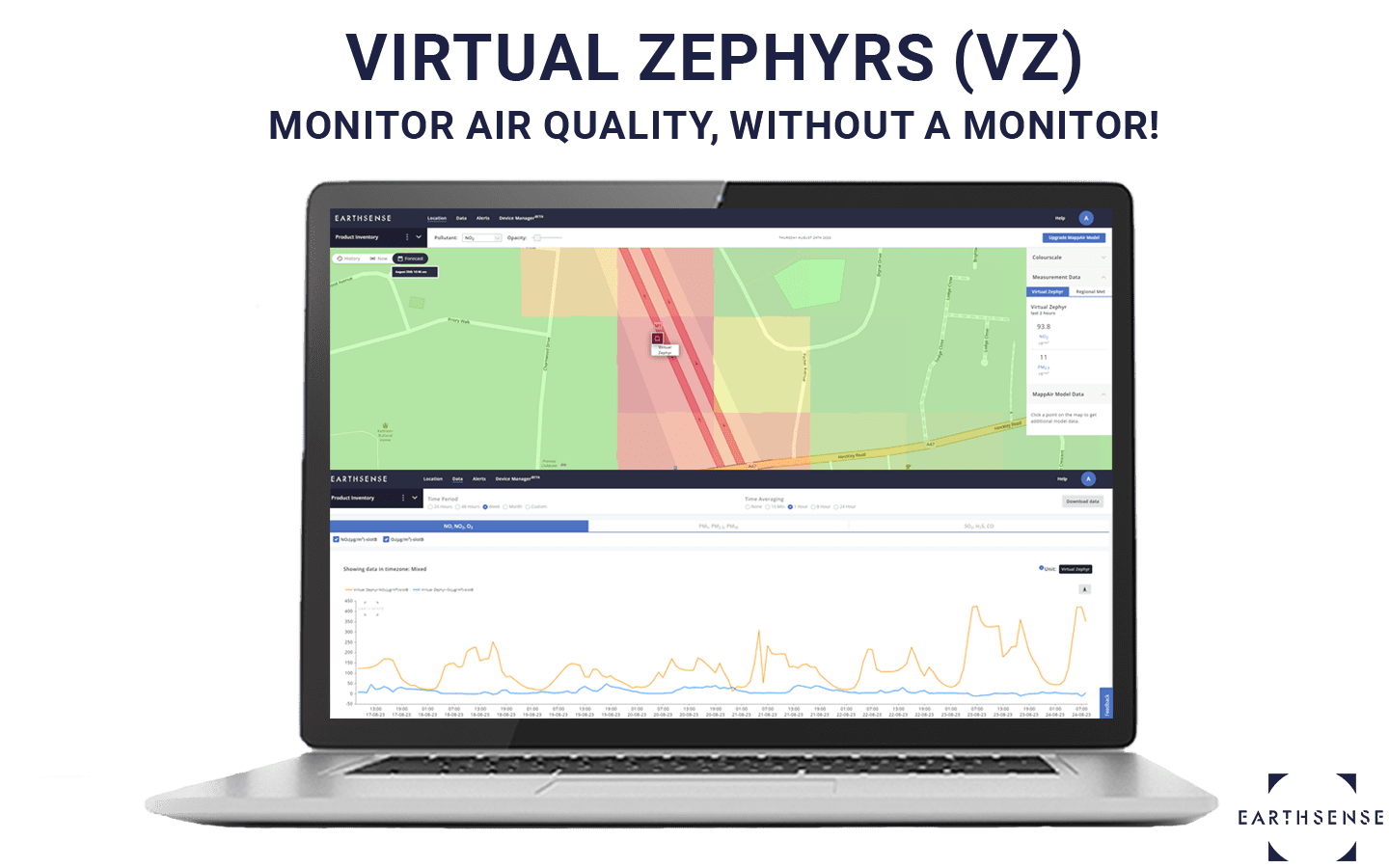
Being able to monitor air quality without a sensor in place seems like magic, although highly impressive, it’s not quite magic. Advancements in technology are allowing for more novel and innovative solutions in a range of situations. In this case, EarthSense released a solution for collecting air quality data completely virtually in 2022 called Virtual Zephyrs (VZ).
Virtual Zephyrs allow the users to select a location on a map, like dropping a pinpoint, and start recording air quality information just like a physical monitor would. VZs are a great entry point and allow you to start tracking and analysing any location without the need for physical monitoring equipment. Once created, the VZ stores hourly data from the near-real-time hour MappAir modelling data sets.
The uses for VZs can cover monitoring gaps where it is simply too difficult or not possible to place a physical monitor in place. Or to provide a cheaper alternative to monitor air quality for places such as Schools with limited funding. VZs can also be used alongside existing physical air quality monitors, to expand and enhance an air quality monitoring network.
All VZ’s capture modelled NO2 and PM2.5, SO2, O3 and PM10 data, alongside weather information and source apportionment. VZ’s inside a City Model capture Source Apportionment data such as emissions from a range of vehicles, railways, ports, and wood burning. This data collected can then be downloaded via CSV or analysed using EarthSense’s MyAir platform’s data analytics.
www.earthsense.co.uk






